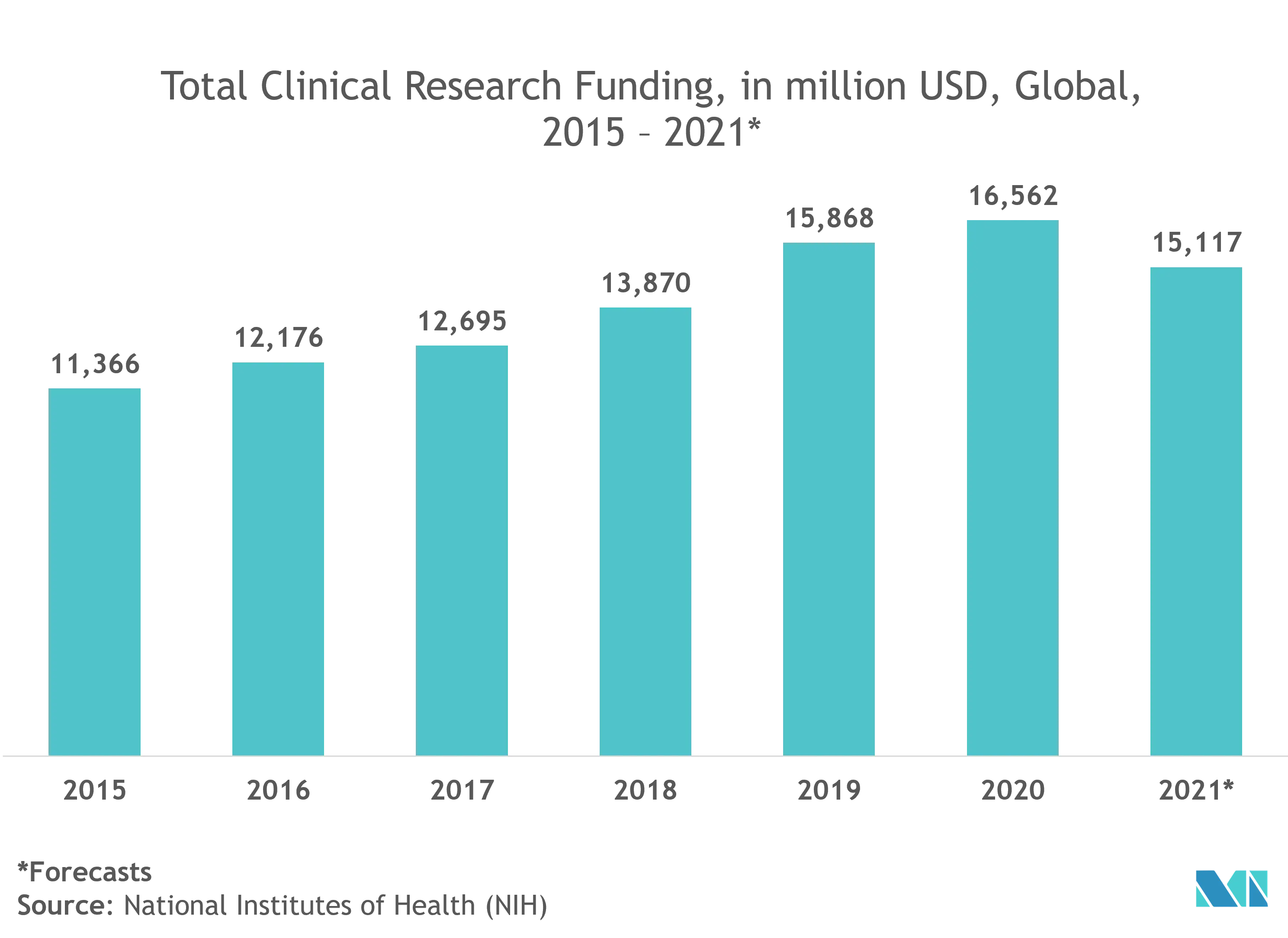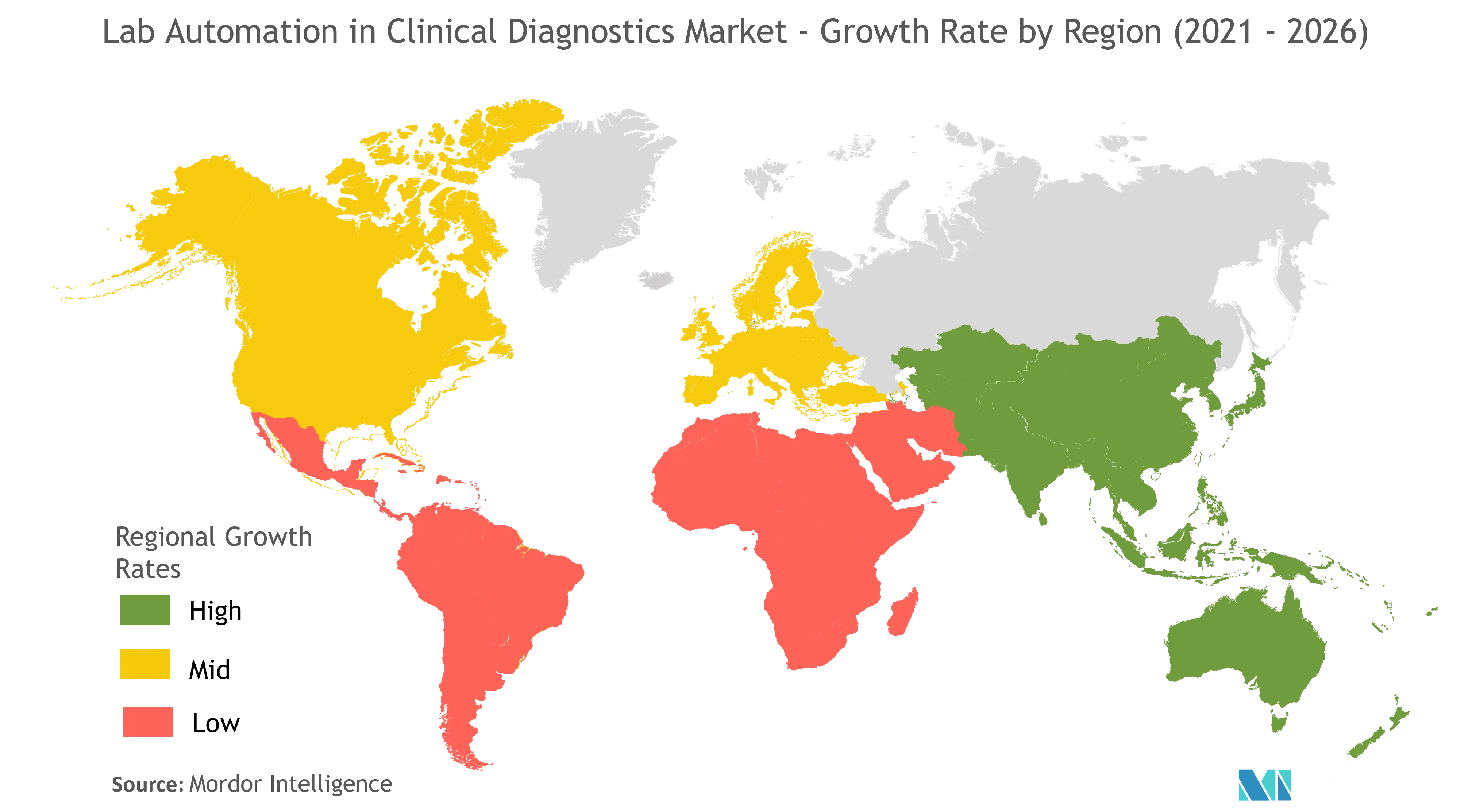Market Trends of Lab Automation in Clinical Diagnostics Industry
This section covers the major market trends shaping the Lab Automation in Clinical Diagnostics Market according to our research experts:
Automated Liquid Handlers is Expected to Hold Significant Market Share
- Liquid handlers are usually employed in biochemical and chemical laboratories. Automated liquid handling robots help in dispensing samples and other liquids in laboratories. Liquid handlers operate via a software controller using an integrated system that customizes the handling procedures with large transfer volumes.
- Automated liquid handlers minimize run times and maximize accuracy. Liquid handlers can operate across many volumes, extending into nanolitres, proving their usefulness in dispensing operations. Leading companies have set the benchmark for the development of automated liquid handlers and are constantly investing in developing premium products to increase productivity effectively.
- Moreover, vendors in the market are innovating products to enhance their product portfolio. For instance, Tecan announced the new Cavro Magni Flex for next-generation automated liquid handling development primarily intended for low to medium throughput workflows for virtually any life sciences application, ranging from immunoassay processing to molecular diagnostics.
- Additionally, advanced liquid handling technologies, such as automated positive displacement pipetting systems, enable users to handle highly viscous to highly volatile liquid types of both lower volume ranges and a wider variety of liquid types. Companies like Beckman Coulter have launched a range of flexible, scalable liquid handling solutions for genomic, cellular, protein, and other workflows. The Biomek 4000 Automated Liquid Handler launched helps standardize daily pipetting routines, maintain sample quality, and generate repeatable, reliable results.
- Furthermore, in January 2020, Hamilton Company announced that its latest automated liquid handling platform, the Microlab Prep, is available through their e-commerce website in the United States and Canada. The compact Microlab Prep provides complete walkaway convenience and effective liquid handling performance in workflows using 96- and 384-well microplates and other sample vessels.

North America Accounts For the Largest Market Share
- North America has been a pioneer in clinical research for years. This region is home to some major pharmaceutical companies, like Pfizer, Novartis, GlaxoSmithKline, J&J, and Novartis. This region has the highest concentration of contract research organizations (CROs). This region's major CROs are Laboratory Corporation of America Holdings, IQVIA, Syneos Health, and Parexel International Corp.
- The inclusion of robotics and automation has been a significant factor aiding the transformation of the clinical research industry. According to the US National Library of Medicine, 98,119 clinical studies were registered in the United States last year. Moreover, there has been a significant rise in the FDA approvals received in the past years, owing to automation.
- This region benefits the most from the proximity of the automation equipment and software providers. With the equipment manufacturers and institutes carrying out a clinical trial, the companies can also achieve a better synchronization to integrate various equipment's, which is the most crucial aspect of process automation.
- Further, Microbiological labs in the region seek technologically innovative solutions to cope with samples and limited personnel resources. Some major manufacturers, such as BD Kiestra and Copan Diagnostics Inc., are commercializing partial or complete lab automation systems for bacteriology in the United States.
- Mayo Clinic's clinical microbiology lab, United States, uses automated blood culture instruments that sense microbial growth in blood culture bottles and mark positive bottles for immediate attention by technologists.


